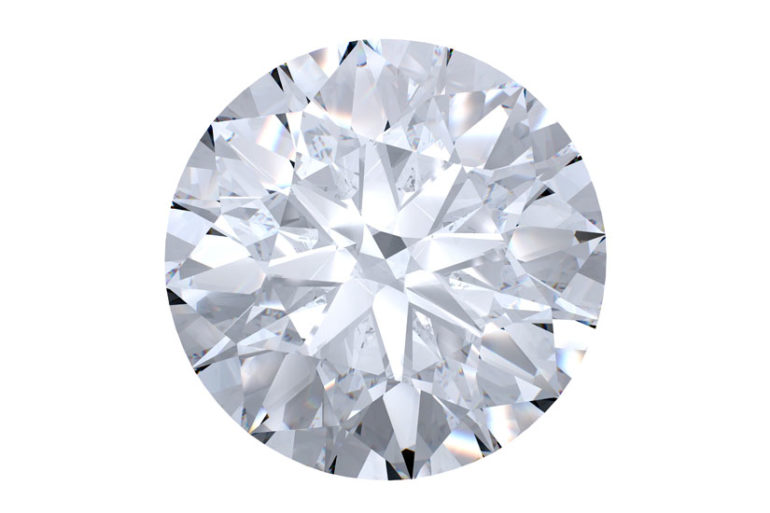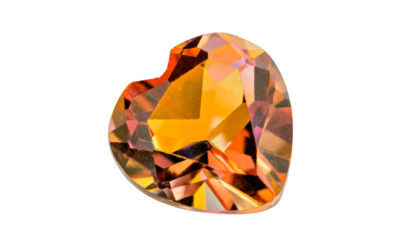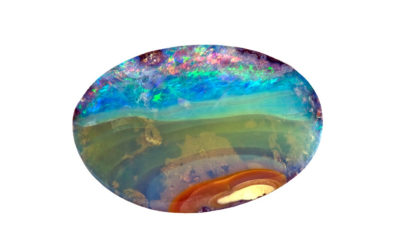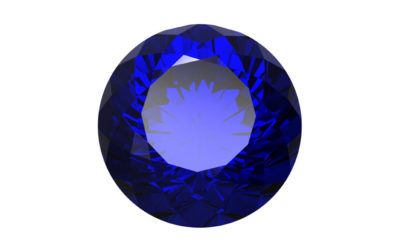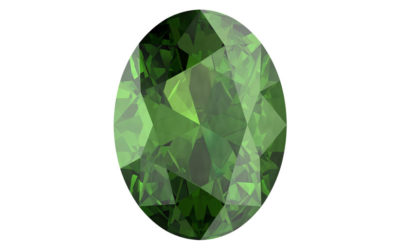If you were born in April, congratulations because your birthstone wins the popularity contest. Not only is it popular, but it is also considered by some as the most precious of them all.
We’re talking about the diamond. Madonna wowed pop fans in the 1980’s with her Material Girl music video, which depicted diamonds as being the most sought-after thing in a “material world.” Rihanna struck a hit when she related the shining resonance of a diamond to a strained, yet powerful love affair.
Besides being a pop cultural phenomenon, the diamond is also one of the highest rated gems. It can be cut into some of the most alluring pieces, and its polish can bring anyone to their knees. They’ve been used to reference the stars in the sky countless times and are known to be one of the hardest gems in the world. Let’s take a deeper look at the famous April birthstone.
The origins and power of the diamond
The diamond is quite old, and by old, we mean more than a few billion years old. It has been traced back to India within the 4th century BC where it was used for trading and collecting (Diamond History).
There’s record that Pliny, a Roman naturalist, called the gem “the most valuable” in all the world, and it seems like that may still hold up in the modern world, given how much we praise the gem in popular culture!
In the Middle Ages, it was considered to have the power to cure ailments such as weakness within the body and psychological disorders.
The gem of love and eternity
Thematically speaking, the gem is known by some as the stone of love. This is perhaps why we see so many different commercials on TV with phrases like “diamonds are forever” and are identified with wedding photos, dresses, and proposals.
It is said that early Roman culture considered the tip of Cupid’s arrow to be made of diamond. Because of its durability, it is believed that it may have represented love with its ability to withstand almost anything. Various cultures in the past believed in its durability and thought that it gave wearers strength for upcoming battles.
Where are diamonds found?
Early on in its excavations, the April birthstone was found mostly in India. It was sold in trades within parts of Europe such as Venice. Unfortunately, greed for the gem made it scarce as time went on and miners turned to Brazil.
It wasn’t until the late 18th century that heads turned toward South Africa where a large amount of diamond was found and of course, excavated. Diamonds aren’t exclusively in those areas though, as now, it’s found in Russia, Canada, Namibia, and Botswana.
Diamonds are hard
When we say that a diamond is tough, we mean really tough! Coming in at a 10 on the Mohs scale of hardness, the gem is super robust. The reason for this, scientifically speaking, is because it’s made of carbon. Carbon makes it over 50 times harder than other natural things. As a matter of fact, you have to use a diamond to cut a diamond!
Diamonds aren’t only clear or white
While we like to only think of diamonds as glittering clear pieces of jewelry, they actually come in different colors. They can be green, pink, blue, red, and even yellow.
The deepness of the color can also be super light and kind of dark. The deeper colors tend to have a higher value to them, probably due to their rarity. They can be priced up a lot higher than clear colored diamonds at times. Thanks to modern science though, you don’t have to empty your wallet to get a rarefied color gem because you can get what is called a “color-treated diamond” from a lab.
Real versus synthetic diamonds
The technological age has changed the way we both see and purchase the gem. We’ve been able to create perfect looking versions of the gem through synthesis. Many can’t tell the difference between the ones that are mined and the ones made in labs. The concern that some might have with this is that there could be people who con others into buying a synthetic version of the gem, but the diamond industry as a whole has tried to make sure that there is a way to tell the difference between the two versions.
So far, there isn’t too much of a need for concern regarding the synthetic version taking over the market because it still only makes up a very small percentage of the market as a whole.
Diamonds make the perfect adornments
Diamonds are used in all sorts of pieces of jewelry. It’s very popular for use in adornments. Perhaps the reason why is because of how the gem fractures the light into attractive little rays that catch the eye’s attention when the sunlight hits it. It makes quite the statement without saying a word!
Speaking of light, one of the ways in which the value of the gem is measured is through four characteristics – color, clarity, cut, and carat. Since the early 1950’s, the Gemological Institute of America has used those four attributes to determine how expensive (or not) a diamond is (All About).
Early beliefs about the diamond
According to An Encyclopedia of Occultism by Lewis Spence, at one point in history, the April birthstone was believed to have given victory to the person, who had a piece of it bound to their left arm, against any number of foes! It could be one versus a hundred and you’d still win as long as you had a piece.
It was also believed to help those who were considered crazy to gain a sense of sanity and help those who sleepwalked. The encyclopedia also notes that certain diamonds grabbed iron toward it better than a magnet would. And, strangely enough, the encyclopedia mentions that due to the gem being so hard, you could only break it by wiping a fresh layer of goat’s blood on it.
The diamond and the divine
The gem was believed to have come from a divine being, or so it is believed in the 1886 publication of Precious Stones, Art, and Literature. It cites that in Ancient Greek culture, the gem was a young person who had went to the Island of Crete and had bothered the all mighty Zeus. As punishment, they were turned into the gem.
For Plato, the gem was a naturally occurring fermentation of the stars above. It makes you wonder if that’s the reason why we link diamonds and stars together so many years later.
The book also links the gem with gold. This, perhaps, comes from when the diamonds with quartzite and the quartz happen to have a sliver of gold in them.
The controversy behind the diamond, part one
The history behind the April birthstone isn’t without its share of controversy. Known as “blood diamonds,” certain cuts of these gems were once located in western and central Africa. In those war-torn countries, certain groups of people rose up into power and took over the mines.
They, in turn, used the mined gems for money to further their political gain. They became tainted because of this, and many people who traded became wary of business and trade revolving around these gems. Many believed that it helped promote more bloodshed and empowered these groups.
The concern became so great that the diamond industry and trades, alongside the United Nations, created what is now called the Kimberley Process. Established in the early millennium, the process was meant to backtrack all diamonds that trafficked their way into their presence, making sure that the gems that were tagged as “blood diamonds” weren’t mixed in with regular diamonds (The Kimberly Process).
Certificates and documents are needed for these gems to make sure that they’re in line with the process. They also want to make sure that the gems aren’t being sent to them and, therefore, used to fund them.
The controversy behind the diamond, part two
As far as the success rate goes for the Kimberley Process, it hasn’t been perfect, but it has helped to keep out many of the tainted gems. There was a reported two or so percentage in 2000.
The Gemological Institute of America quotes that only one percent of the diamond trade may be tainted. The Heartless Stone, a book published in 2006 regarding the controversy, criticized the process, noting that it is easy to smuggle diamonds between the borders of Africa, and also easy to create a false history behind one.
The criticism also pointed towards the fact that some of the diamond mines aren’t marked correctly, meaning that while some of these places may not have been active in war, their mines are still tainted. And yet, according to the process, they are still considered fine for trade.
De Beers is the reason why we love diamonds, part one
The way in which the gem became a popular seller in the modern day is quite interesting. Going back to De Beers in the late 1800’s, there was a need for investors to merge in order to gain profit and power. Separated, they were too thinned out and dispersed. They wanted control of the market and in order to do that, they had to make it seem like diamonds were becoming more and more scarce. (In truth they weren’t.)(Have You)
This is where the idea of De Beers Consolidated Mines, Ltd. came into play. It was a success and they began to take control of the world’s influx of the gem. The name changed as it made its way around the world but it was the same entity.
In London, it was known as the Diamond Trading Company. It was known as The Syndicate in Israel. Parts of Europe knew it as the Central Selling Organization. Parts of Africa knew it as the Diamond Development Corporation and Mining Services, Inc.
The success of De Beers was successful in that it kept the value of the gem high. Other items, like grains, rubber, copper, gold, and silver had intense highs and lows which ebbed and flowed with the unpredictable economy.
Very surprisingly, because of this success, the gem was able to keep its high value through the Great Depression. Such control over the value of something is very rare to see in the world. There was even a time, within the 1970’s, in which there was a fear that the gem would go through a crazy inflation level, so some people bought them merely out of fear of this!
De Beers is the reason why we love diamonds, part two
So how does this tie into the modern popularity of the gem? Well, through the fixing of prices of the birthstone, it turned these precious gemstones into a strong symbol. They became the face of romance, power, and wealth.
De Beers was able to keep the cost at a stable rate and keeps the demand moderately high, thus creating the perfect space for this to happen. The value of it was shaped into something that has arguably become cultural nostalgia. We now consider the gem to be something that brings to mind marriage, and before that, courtship.
Nostalgia gives birth to sentiment, and that’s where De Beers truly succeeded. You don’t want to get rid of something that’s become nostalgic. You want to hold on to it … “forever.”
And that’s why now we see that word scroll across our television screens and mobile devices.
How to care for your diamond
If there is any birthstone that has captured the hearts and imagination of the world, it is the April gemstone.
We want to keep it near us, and because of that, we want to make sure to keep them clean and radiant. Cleaning the gem is pretty easy. You’ll want to do so with warm water and a mild soap. Avoid using any cleaners with chlorine in them (Diamond Care).
Although diamonds are very tough, you’ll still want to be careful when cleaning them. You may not even want to scrub it. Letting it sit in a combination of warm water and mild soap can be enough. If not, get a soft bristled brush and clean within the smaller crevices.
A toothbrush can work well, especially if you soften the bristles with warmer water beforehand. Be careful not to run it under hot water and then place it on a cooled diamond. Quick changes in temperature can diminish it. Dry it off with a lint-free, clean cloth and you’re all set!
—
April’s birthstone has a long and complicated story behind it, but just like its hardness, it’s been able to withstand controversies and continues to be a shining example of what love and endurance truly are. Societies across the world will continue to smile and voices will whisper “I do” as the gem shines under the overhanging sun.
References
American Gem Society. “Diamond History | April Birthstone – American Gem Society” AmericanGemSociety.org, www.americangemsociety.org/page/diamondhistory (accessed September 28, 2018)
GIA. “Gemological Institute Of America | All About Gemstones – GIA” GIA.edu, www.gia.edu/ (accessed September 28, 2018)
The Atlantic. “Have You Ever Tried to Sell a Diamond? – The Atlantic” TheAtlantic.com, www.theatlantic.com/magazine/archive/1982/02/have-you-ever-tried-to-sell-a-diamond/304575/ (accessed September 28, 2018)
Kimberley Process. “The Kimberley Process (KP) | KimberleyProcess” KimberleyProcess.com, www.kimberleyprocess.com/ (accessed September 28, 2018)
Zoara. “Diamond Care Guide, How to Clean Diamonds” Zoara.com, www.zoara.com/diamonds/care (accessed September 27, 2018)

